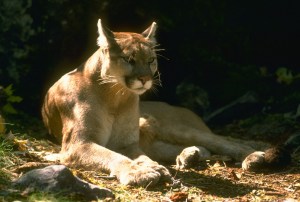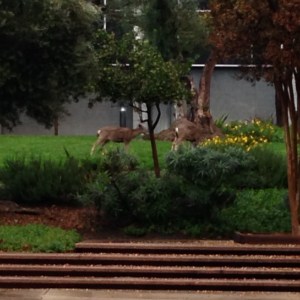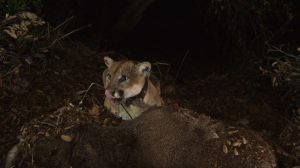
Staff at the Jet Propulsion Laboratory in La Canada Flintridge were warned Tuesday about the possibility of a predator animal on the campus that could be a mountain lion.
In an email sent to all personnel at the NASA/Caltech facility on Tuesday afternoon, Environmental Affairs Program Office manager Charles Buril said a “developing situation” involved the killings of deer at JPL.
“During the last several weeks, a number of deer have succumbed to what appears to be a large predatory animal on JPL grounds,” Buril wrote to JPL’s several thousand employees.

“While a positive identification of the predator has not yet been accomplished, various animal sightings onsite, and evidence at the locations where the deer succumbed to their wounds, leads us to believe the animal responsible is either a mountain lion or bobcat.”
The JPL campus is at the base of the San Gabriel Mountain foothills (map), near prime territory for Southern California’s population of mountain lions. While deer are pumas’ favored food, bobcat attacks on deer are extremely rare.
A mountain lion sighting in the JPL area prompted warnings in 2008, the Los Angeles Times reported at the time.
The California Department of Fish and Wildlife was contacted by JPL about how to handle the “apparent presence of a predator on-Lab,” the email stated.
A spokeswoman for the department’s Southern California region said a wildlife biologist was in touch with JPL but had not been able to inspect deer carcasses for evidence that the animals were killed by a mountain lion.
“Everybody thinks it’s a lion but it could be a coyote. We don’t think it’s a bobcat. These deer could be getting hit by car,” California Department of Fish and Wildlife spokeswoman Janice Mackey said. “We’re not issuing a mountain lion warning.”
The wildlife biologist had recommended JPL try to keep deer off the campus, Mackey said.

JPL planned to place a motion-activated camera near deer that have been killed in an effort to identify the predator when it comes to feed.
A trail camera, recommended by the California Department of Fish and Wildlife, could help JPL identify what is killing the deer, Mackey said.
A remote camera recently captured the famed Griffith Park mountain lion P-22 in the act of his evening meals. And a trail camera in Glendora, also in the San Gabriel Mountains, has documented a family of four mountain lions wandering a game trail.
The email Tuesday reminded JPL employees not to feed deer and to avoid hiking or biking alone, especially at dawn, dusk and at night, among other points of guidance from state wildlife officials.
Because mountain lions are quiet, solitary and elusive, the possibility of seeing one is extremely rare, as is the likelihood of an attack on a human, the email stated.
About 5,000 employees worked at JPL in 2011, according to a fact sheet on the center’s website.
Related Video:














